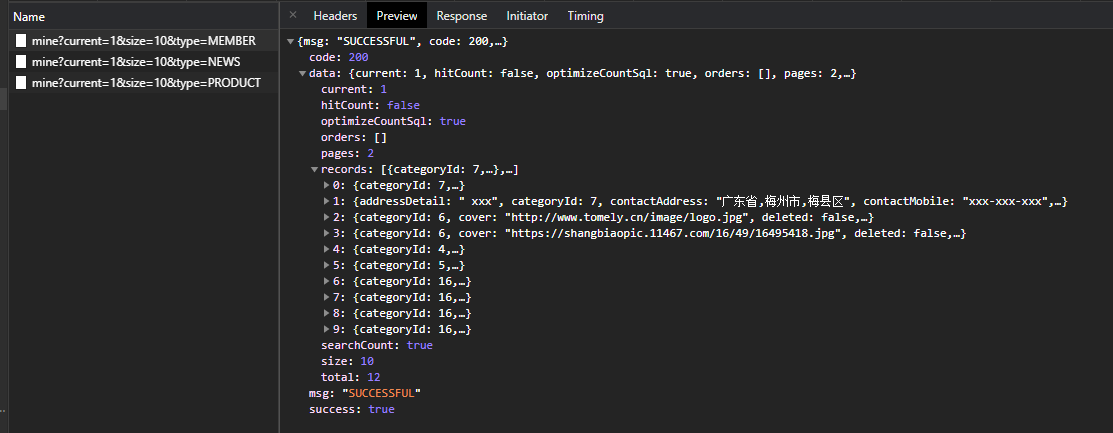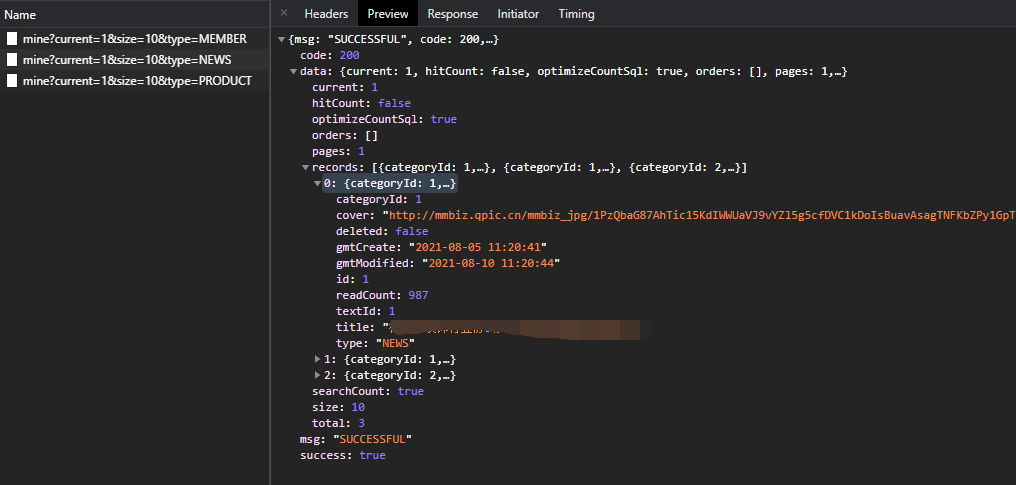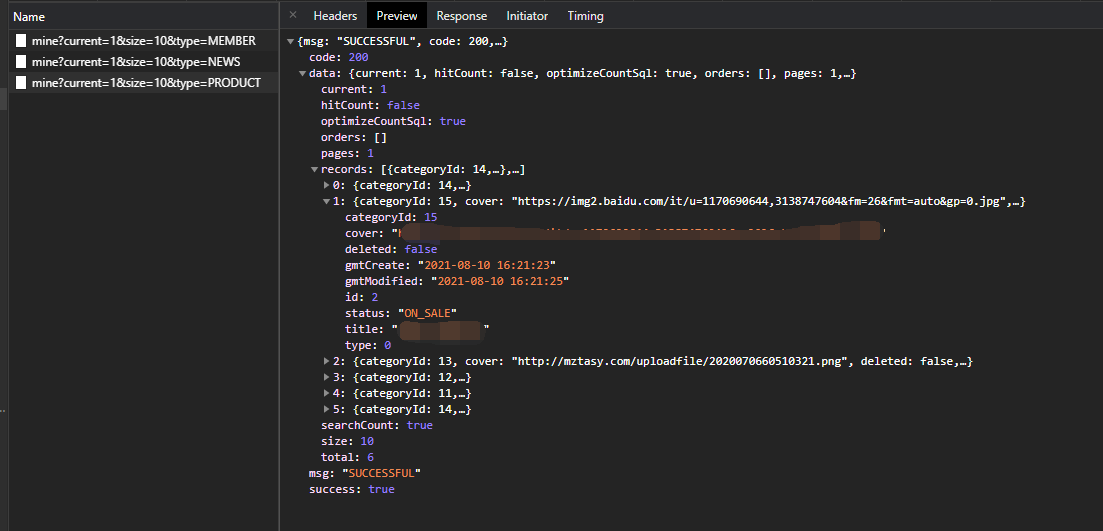艺术生永远不要把学技巧放在第一位,而要把怎么思考放在第一位。——灵遁者
今天为了偷懒,写了两个函数
1
2
3
4
5
6
7
8
9
10
11
12
13
14
15
16
17
|
@SneakyThrows
public static <T extends BaseEntity<T>> IPage<T> selectPageByIds(IPage<T> page, List<?> ids, Class<T> type) {
if (ids.isEmpty()) {
return page;
}
return type.newInstance().selectPage(page, new LambdaQueryWrapper<>(type.newInstance()).in(T::getId, ids));
}
|
这里用到了AR模式,AR模式我之前博客写过,就不赘述了
AR模式文章戳我
看上去就两三行,但这个函数能应对我此处的需求:查询我的关注企业/收藏资讯/收藏产品列表等
然后我在service中调用如下:
1
2
3
4
5
6
7
8
9
10
11
12
13
14
15
16
|
@Override
@Transactional(readOnly = true, propagation = Propagation.NOT_SUPPORTED)
public Result mine(Page page, UserAttention userAttention) {
userAttention.setUserId(Long.valueOf(ProfileHolder.getProfile().getId()));
List<Long> ids = list(Wrappers.lambdaQuery(userAttention).select(UserAttention::getAttentionId)).parallelStream().map(UserAttention::getAttentionId).collect(Collectors.toList());
return Result.ok().data(MybatisPlusUtils.selectPageByIds(page, ids, userAttention.getType().getTypeClass()));
}
|
这里第一行是给参数赋值,便于作为下方查询条件
1
| userAttention.setUserId(Long.valueOf(ProfileHolder.getProfile().getId()));
|
第二行是从表内根据条件查询出关联数据
例如这里service的第二行是:在userAttention中调用UserAttention::getUserId,并以user_id=userId作为where条件,在对应的数据库表名为user_attention中取出attention_id,但mybatis-plus的selectList返回的是UserAttention,所以我们再使用并行流转换为attentionId
1
| List<Long> ids = list(Wrappers.lambdaQuery(userAttention).select(UserAttention::getAttentionId)).parallelStream().map(UserAttention::getAttentionId).collect(Collectors.toList());
|
最后拿到的返回值就是attentionId的集合,然后这个ids是用于关联其他表的
最后第三行中我们写法如下:
1
| return Result.ok().data(MybatisPlusUtils.selectPageByIds(page, ids, userAttention.getType().getTypeClass()));
|
这里调用了我们上面的selectPageByIds,然后传入了
page:分页参数
ids:上方获取到attentionId的集合
userAttention.getType().getTypeClass():这个对应了一个枚举如下:
1
2
3
4
5
6
7
8
9
10
11
12
13
14
15
16
17
18
19
20
21
22
23
24
25
26
27
28
29
| package com.ruben.zsxh.enumration.type;
import com.ruben.zsxh.entity.ArticleInfo;
import com.ruben.zsxh.entity.MemberInfo;
import com.ruben.zsxh.entity.ProductInfo;
import com.ruben.zsxh.pojo.common.BaseEntity;
import lombok.AllArgsConstructor;
import lombok.Getter;
@Getter
@AllArgsConstructor
public enum UserAttentionTypeEnum {
MEMBER("关注企业", MemberInfo.class),
NEWS("收藏资讯", ArticleInfo.class),
PRODUCT("收藏商品", ProductInfo.class);
private final String desc;
private final Class<? extends BaseEntity> typeClass;
}
|
然后我们再配置mvc配置fastjson序列化枚举以及Mybatis-plus通用枚举之后
再到Controller中调用service
1
2
3
4
5
6
7
8
9
10
11
12
|
@GetMapping("mine")
public Result mine(Page page, UserAttention userAttention) {
return userAttentionService.mine(page, userAttention);
}
|
最后就能实现传入不同的type,分页拿到不同表的数据
例如传入MEMBER

传入NEWS

传入PRODUCT

这样就能用最少的代码做最多的事,达到事半功倍的效果


